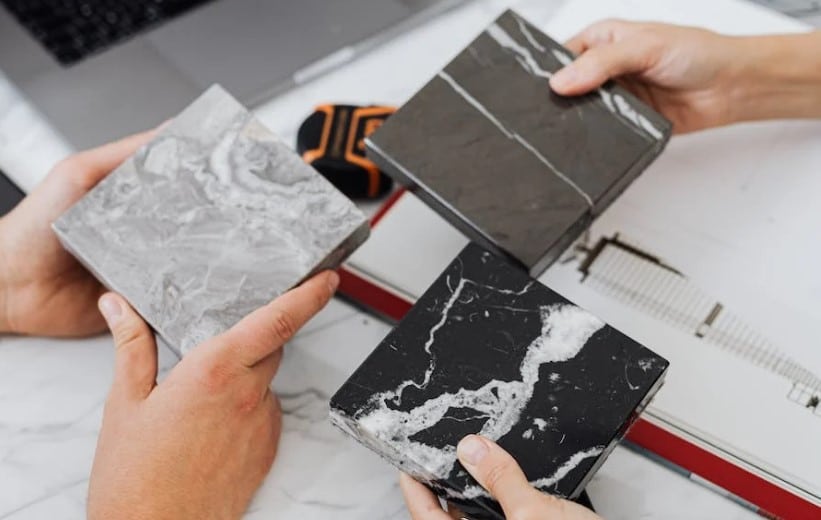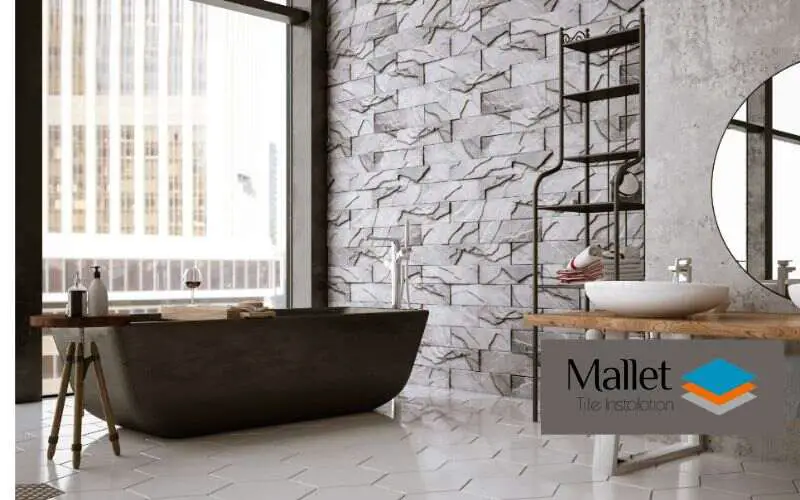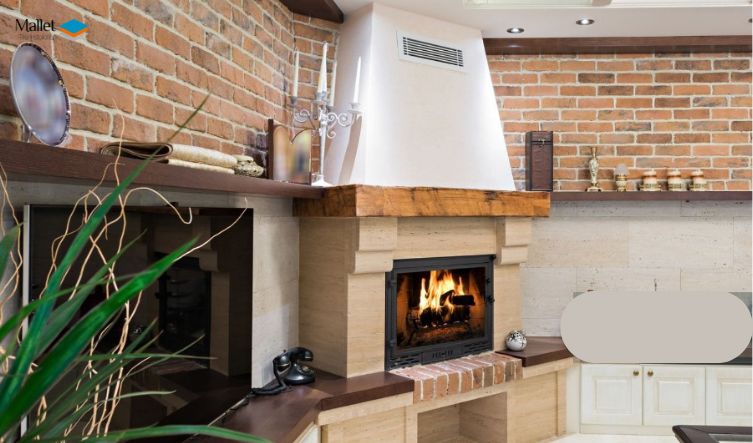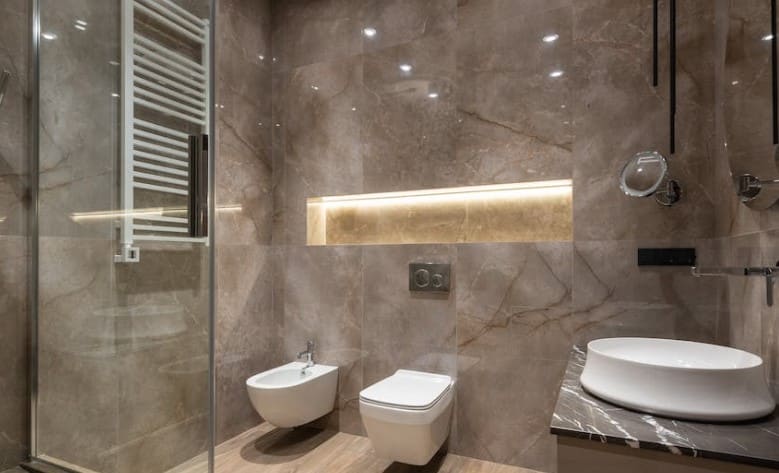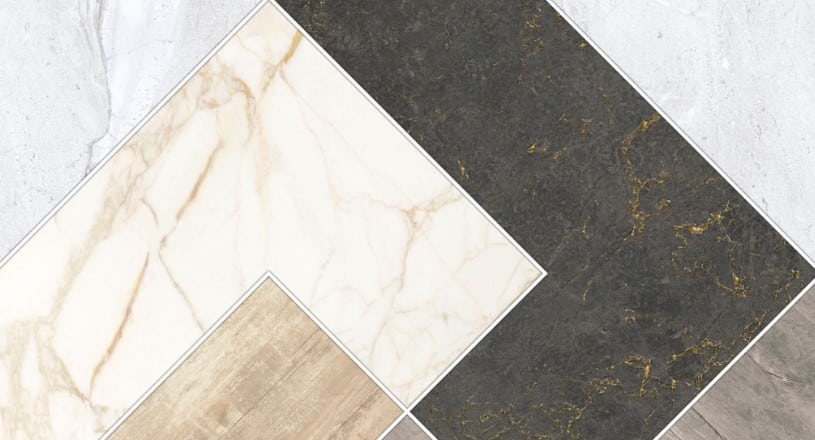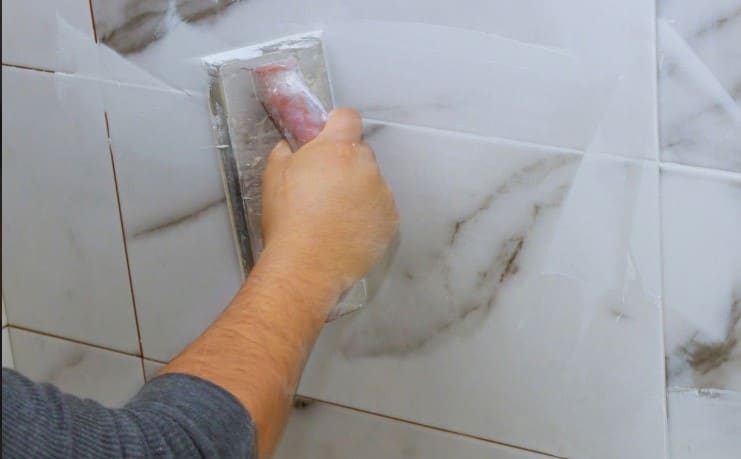Tiles, with their toughness and easy-to-clean nature, have become a favorite choice for many when it comes to flooring. They add a touch of beauty to our homes too. But, as strong as they seem, they’re not unbeatable, especially when we place heavy furniture on them. Imagine putting a huge sofa or a hefty table on top of your shiny tiles – it’s like having a really heavy person standing on your back! Over time, this weight can cause cracks or damage affects tiles, ruining the beautiful look of your floors. However, there’s no need to worry too much. There are simple ways to protect your tiled floors from getting hurt by furniture. Think of using protective pads under furniture legs – like giving your tiles a pair of shoes so they don’t get scuffed. This way, you can keep your floors looking as good as new, without giving up on your favorite furniture pieces. Protecting your floors is like making sure your tiles and furniture play nice with each other, ensuring that your home stays beautiful for a long time.
The Science Behind Damage
Pressure Points
Imagine walking across a wooden floor in stiletto heels. The heels are so skinny they push hard into the wood because all your weight is on those tiny points. This can easily damage the floor. Similarly, when we put heavy furniture on tiles, the same thing happens. The weight of the furniture is all on small parts that touch the ground, causing the tiles to crack or break after some time. It’s like the sharper and smaller something is, the more pressure it puts on whatever it’s standing on, leading to damage. Just like skinny heels or heavy furniture can hurt floors, anything heavy resting on a small point can cause problems.
Types of Tiles and Their Limits
When choosing tiles for your home, it’s like picking out shoes; you need to know what they can handle so they don’t get ruined. Just like some shoes are better for running and some for dancing, tiles are made of different stuff and some can take more weight without breaking.
Ceramic tiles, the ones often found in kitchens and bathrooms, are like your everyday sneakers; they’re good for a lot, but if you put too much weight on them, they might crack. On the other hand, porcelain and natural stone tiles are like heavy-duty boots; they’re tougher and can handle more weight. So, when you’re deciding where to put heavy furniture, think about the type of tile you have. This way, you can avoid cracks and keep your floors looking good. It’s all about knowing what your tiles can take and planning your space to make the best use of what you’ve got.
Case Studies
Imagine you have a big, heavy piece of furniture, like a huge old cabinet or a grand piano. Now, think about putting that in a room with tiles on the floor. Sounds okay at first, right? But here’s the thing – those really heavy items can cause a lot of damage to the tiles. Picture walking into a cozy house and seeing the kitchen tiles all cracked and broken because someone put a super heavy antique cabinet on them without thinking it might be too much.
Or imagine going into a sleek, modern loft, only to notice cracks running through the floor tiles because of a grand piano sitting on top of them. These aren’t just made-up stories; stuff like this happens in real life. It shows us why we need to think about protecting our floor tiles before we place something heavy on them. Keeping our floors safe from damage not only keeps our homes looking nice but also saves us from having to spend money and time fixing them later on.
Prevention Techniques
Proper Furniture Placement
When arranging your room, thinking about where to put your furniture can make a difference, especially for the floor beneath. Imagine you have a heavy couch or a big bookshelf. If you just stick it anywhere without thinking about the tiles or wooden floor it sits on, you might end up with some damage or uneven spots. It’s kind of like making sure you don’t put all your heavy groceries into one bag when you could spread them out to make it easier to carry.
So, before you decide where to put your heavy items, take a look at your room’s layout. Try to figure out which areas can handle more weight. This way, you’re not only keeping your floor safe but also creating a balanced, nice-looking space. It’s about being smart with your space and taking care of what’s beneath your feet, too.
Use of Protective Accessories
Furniture pads, coasters, and rugs do a lot more than just make our homes look nice. They serve a very important role in protecting our floors, especially if we have tile flooring. Imagine dragging a chair across your kitchen floor without a pad under the legs; it can scratch or even crack the tiles, which can be upsetting and expensive to fix. By using these simple items, we can safeguard our floors from these kinds of damage.
Coasters aren’t just for avoiding rings on your coffee table; they also keep the surface from getting scratched. Rugs add warmth and color to a room, but they also act like a cushion, so when you drop something heavy, there’s less chance it will damage the floor. So, these small accessories are not just about decoration; they provide an important protective layer that keeps our floors looking good for longer.
Regular Maintenance Tips
Taking care of things regularly, like making sure tiles at home are clean and looking out for the first signs they might be getting damaged, can really help stop small problems from becoming big headaches. Imagine if you never cleaned your room; eventually, it would be hard to find anything! Similarly, if we don’t keep an eye on our tiles, dirt can pile up, and small cracks or chips might get worse.
It’s like when you get a tiny scratch on your arm—if you clean it and put a bandage on it, it heals quickly. But if you ignore it, it could become infected. So, by just spending a little time now and then cleaning the tiles and looking closely to see if there are any chips or cracks, we can keep them looking good as new for a long time. Plus, it saves us from the trouble and expense of having to replace a big section of tiles later on. It’s pretty much like taking care of a pet or a plant; a little love and attention can go a long way.
Innovations in Furniture Design
Lightweight Materials
In recent years, the magic of science has touched the world of furniture, making our chairs, tables, and shelves lighter without losing their strength. Imagine having a bookshelf that you can easily move around, yet it’s tough enough to hold all your heavy encyclopedias. This is possible thanks to new materials like carbon fiber composites and special kinds of metal that are hollow inside.
These materials are like the superheroes of the furniture world. They’re strong and durable, fighting against the wear and tear of daily use, but they’re also lighter than a feather (well, almost!). Because of these advancements, gone are the days when moving furniture was a workout session. Now, rearranging your room or moving to a new place is much easier, making these scientific breakthroughs not just cool but truly helpful in our everyday lives.
Smart Furniture Feet
Innovation in furniture design is making our homes more comfortable and our floors safer. Imagine the legs of a couch or a table. In the past, they were simple and sometimes left marks on our tiles. But now, designers have come up with smarter furniture feet that spread weight evenly, so they don’t hurt the floor. What’s even cooler is some of these legs can be adjusted.
This means if your floor isn’t perfectly flat, you can tweak the legs so your furniture sits steady and doesn’t wobble. No more folded paper under the table leg to keep it from rocking! This change is great because it means our furniture can fit perfectly in our homes, making everything look and feel just right. It’s a small detail that makes a big difference in protecting our floors and keeping our furniture stable.
Integrating with Interior Design
Gone are the days when picking out furniture for your home meant you had to choose between something that looks good and something practical. Nowadays, the latest and greatest in furniture design makes sure you get the best of both worlds. Imagine couches that not only catch your eye but are also built to keep your floors scratch-free, or tables that look super cool and won’t leave ring marks on your tiles. This means you can give your home that magazine-cover look without worrying about ruining your beautiful flooring. It’s all about smart design – furniture that not only makes your home look awesome but also takes care of it. So, when you’re out shopping for new pieces to add to your space, remember, that you don’t have to decide between style and keeping your floors safe. The newest furniture out there has got it all covered.
Installation and Repair
Professional vs. DIY Installation
When it comes to laying tiles, many people choose to do it themselves, thinking they’ll save some money. While it’s true that you might pay less upfront by not hiring a professional, this approach might not be the most cost-effective in the long run. Skilled professionals know exactly how to install tiles so they last a long time and don’t cause headaches later on. If tiles aren’t laid correctly, they can crack, come loose, or let water seep underneath, leading to more expenses down the road for repairs.
On the other hand, experts in tiling have the knowledge and tools to do the job right the first time. They understand how to prepare surfaces, which materials work best in different situations, and how to lay tiles so they’re both beautiful and durable. So, while hiring an expert might seem like more money now, it’s a smart move that could save you from spending more on fixes in the future.
Spotting Early Signs of Damage
Imagine you have a beautiful floor in your home, covered with tiles or perhaps wooden planks. Now, think of your favorite cozy chair or the heavy bookshelf full of stories that sit on that floor. These items seem harmless, right? But what if I told you tiny, almost invisible cracks or those slightly wobbly tiles under your furniture could be a ticking time bomb?
Yes, even the smallest damage can grow bigger when there’s a weight pressing down on it every day. That’s why it’s super important to play detective once in a while and inspect your floors for any sneaky signs of damage. Catching these little troublemakers early means you can fix them before they invite bigger problems, saving your floor (and your wallet) from a world of hurt. So, next time you’re moving things around, take a moment to check the ground beneath. A little bit of attention now can keep your home safe and sound for a long time.
Repair Techniques
When it comes to keeping your house in good shape, taking care of little problems before they grow into big ones is key. Think of your home like a favorite toy or gadget; you’d want to fix it right away if something small went wrong, wouldn’t you? The same goes for your house. If you notice a tiny crack somewhere, using the right glue or filler can make it as good as new again. It’s kind of like putting a band-aid on a small cut so it doesn’t get infected. And what about when a floor tile gets chipped or broken?
You might think it’s not a big deal, but replacing it sooner rather than later can stop more tile repairs from getting damaged. Just like fixing a missing puzzle piece makes the picture complete again, taking care of these repairs keeps your house looking great and saves you from bigger, more expensive fixes down the road. So, remember to keep an eye out for those small issues and handle them quickly. It’s the smart way to take care of your home sweet home.
Advanced Protection Strategies
Modern Protective Coatings
In recent times, keeping our tiled surfaces looking new has become much easier, thanks to some cool improvements in sealants and protective coatings. Imagine your kitchen or bathroom tiles not only being strong enough to handle heavy stuff but also saying “nope” to pesky spills and stains without a fuss. This means that whether you accidentally drop some sauce while cooking or your kids decide to turn the floor into a canvas for their juice art, cleaning up won’t leave you stressed. These advancements are like invisible shields for your tiles, keeping them shiny and clean, and making sure that your floors and walls look welcoming for a longer time.
Plus, this magical layer saves you time and energy since you won’t have to scrub hard or worry about stains becoming permanent guests. So, whether it’s a splash of coffee or muddy footprints, your tiles are now well-equipped to stay beautiful and strong, making your home look its best with much less effort.
Redesigning Spaces for Weight Distribution
When we think about arranging our rooms, we often forget how the weight of our furniture can affect our floors, especially if we have tiles. Imagine all the heavy stuff, like a big couch or a chunky bookshelf, all sitting on one side of the room. This can make small dents or even cracks on the tiles over time because they’re under a lot of stress in those spots.
To fix this, it’s a smart idea to spread out the heavy pieces across the room. This way, the weight is shared more evenly, and no single area gets too pressured. Plus, changing your room’s layout can make it feel fresh and new. It’s like giving your room a little makeover without spending any money. So next time you’re tidying up or thinking of moving things around, remember to balance out the heavy stuff. Your tiles will thank you, and you might just fall in love with your space all over again.
Environmental Factors
When it comes to keeping your tiled floors or walls in top shape, paying attention to humidity and temperature is a big deal. Imagine Tile as a tough but finicky friend. It doesn’t like too much change, especially when it comes from the air or the weather. Too much moisture in the air, or humidity, can make tiles unhappy. They might start shifting out of place or even crack because they absorb that extra water like a sponge. On the flip side, when it’s too dry or cold, tiles can become dry and brittle, making them just as likely to get damaged.
Keeping things steady, with not too much change in how wet or dry, hot or cold it is, can make a huge difference in preventing damage to your tiles. Think of it like creating a cozy home environment, where your tiles can feel comfortable and last longer. So, whenever possible, try to keep an eye on the humidity and temperature to keep your tiles looking their best.
Conclusion
Your tile floors are more than just a pretty face in your home; they’re a big deal because you put a lot of money into them and they make your home look great. Keeping them safe from heavy furniture is key to making sure they look good and last a long time. It’s like having a secret strategy that combines being smart about where you put things, using cool new gadgets, and just using your head.
This way, your floors will always look as fresh and welcoming as they did on the first day. Simply moving furniture carefully, using protectors under the legs of heavy items, and keeping an eye on how things are arranged can make a huge difference. It’s not rocket science, but it’s super important if you want to keep your home looking its best.
FAQs
Q: Can all types of floor tiles withstand the same amount of weight?
A: Not really. Different materials have different tolerances, with porcelain generally offering the highest resistance.
Q: Are there specific furniture accessories recommended for heavy items?
A: Absolutely. Furniture pads, wide coasters, and area rugs are great for distributing weight and preventing direct impact.
Q: How often should tiles be inspected for potential damage from heavy furniture?
A: A good rule of thumb is to check whenever you clean the floors or move the furniture, at least twice a year.
Q: What are the first steps to take if you notice a tile has been damaged by furniture?
A: Assess the extent of the damage. Minor cracks might be fixable with adhesive, but more significant damage could require tile replacement.
Q: Is it worth investing in specially designed furniture to protect tiles, or are there simpler solutions?
A: While innovative furniture can help, using protective accessories and mindful placement often provides a simpler and equally effective solution.

